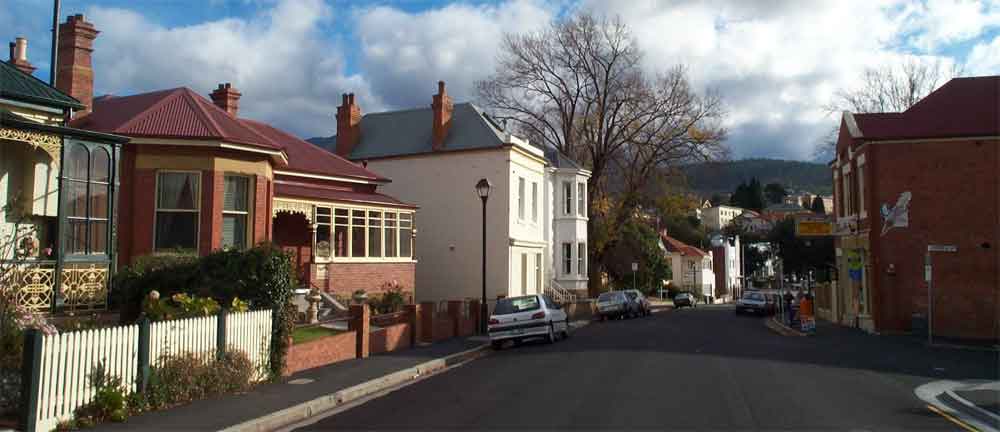One of Hobart’s most fascinating neighbourhoods is Battery Point. It’s also one of the most historic, having been around since the first decade of the nineteenth century.
Battery Point lies just south of Hobart’s waterfront. To the northwest, it borders Parliament Square, Saint Davids Park and Salamanca Place. The suburb’s eastern border is the shoreline and to the south it extends to Quayle Street.
Today Battery Point is a very upmarket neighbourhood and its residents live a genteel lifestyle. After all, the first European person to settle here was the fledgling penal colony’s first chaplain, the Rev. Robert Knopwood, who began to build his house in 1805 just south of the colony’s burial ground near the area’s northern slopes and soon established a small farm. He had generally friendly relations with the original inhabitants of the area, the semi-nomadic Mouheneener people, who would come to visit his farm. In 1811, more land grants were given to free settlers and within three years there were several established farms here.
The name Battery Point refers to a gun battery that used to be located towards the southern end of the point. It was built in 1818 and called the Musgrave Battery. It had earth ramparts and cannons that came from a ship. The battery was supposed to act as a means of defence and soldiers manned it day and night. This doesn’t mean it was very effective, though: On the night of 27 February 1819, thirteen convicts stole a ship called the Young Lachlan and sailed it right past Battery Point and all the way to Java.
The Rev. Knopwood subdivided his land in 1824 and the merchants moved in, building themselves lovely mansions. One of these was Narryna, which today houses the Narryna Heritage Museum in Hampden Road. The merchants also built large warehouses along New Wharf, which was where Salamanca Place is today. Some of these warehouses still stand. Other Battery Point landmarks that date from this time and that you can still visit, are Parliament House, which used to be the old Customs House; St. George’s Anglican Church in Cromwell Street; the houses around Arthur Circus and Kelly’s Steps, which were built in 1839 to link Salamanca Place and Kelly Street.
Life in Battery Point was good and the neighbourhood became a very important whaling port. Of course, with ports come the seedier aspects of life and by 1858 there were eleven pubs in the area, not to mention the houses of ill repute in South Street.
When the whaling industry crashed in the late nineteenth century, other industries such as shipbuilding moved in. In 1908, the Queen Alexandra Hospital for Women officially opened and it was here, in 1909, that Hollywood superstar Errol Flynn was born. The hospital doesn’t exist at the site anymore.
The Great Depression left its mark and Battery Point was soon regarded as a run-down neighborhood. By the 1950s and 1960s, students had moved in and gave the area a Bohemian atmosphere. Gentrification began in the 1970s and today Battery Point is a must on Hobart’s tourist trail.









